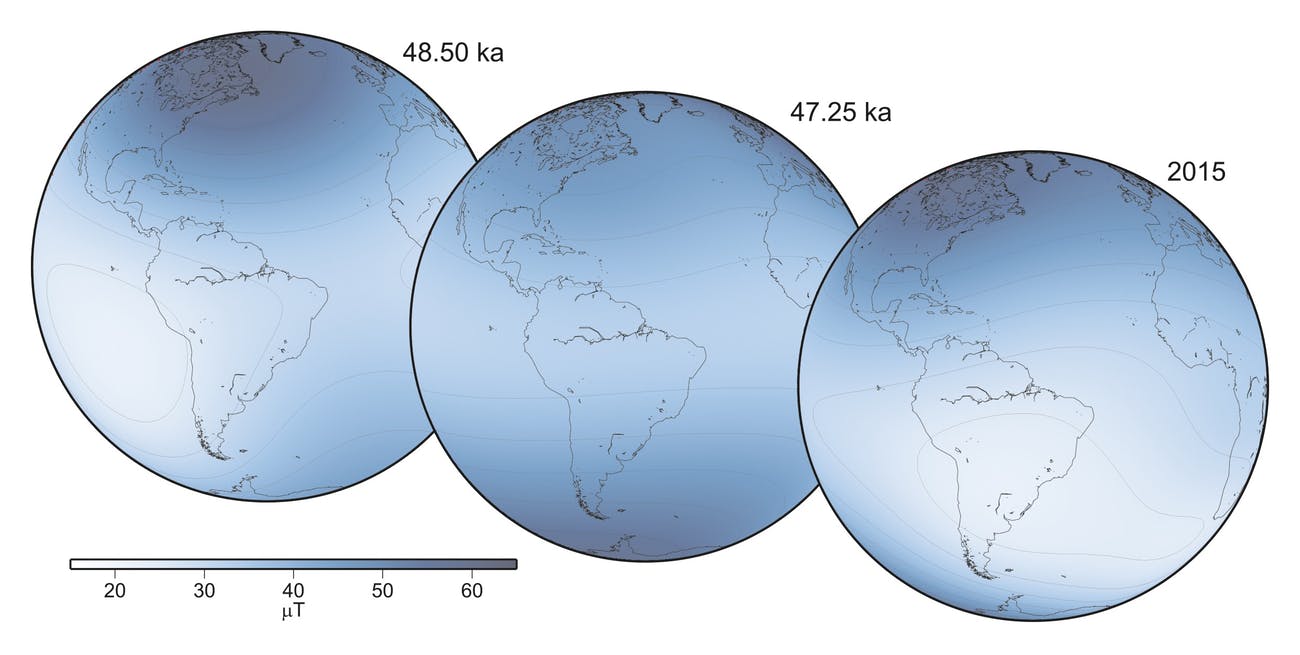Back in the news this month; We generally assume some things about the Earth will always be the same. In the paper, published in January 2018, the researchers presented evidence gathered from southern Africa that could help us get a better idea of what the heck is going on the South Atlantic Anomaly, which spans from Chile to Zimbabwe. The fact is that Earth’s magnetic field reverses polarity relatively often — on average, every couple million years.
The good news is that In a paper published five months later, an international team of researchers provides evidence that the current disturbance in Earth’s magnetic field does not indicate that it’s about to reverse polarity, contrary to what some experts have recently suggested. What would happen if Earth's polarity reverses? Here is a great article by the National Geographic on the topic.
The good news is that In a paper published five months later, an international team of researchers provides evidence that the current disturbance in Earth’s magnetic field does not indicate that it’s about to reverse polarity, contrary to what some experts have recently suggested. What would happen if Earth's polarity reverses? Here is a great article by the National Geographic on the topic.
This is a super fascinating topic. If such an event could happen in our lifetime what would you think the consequences on HF propagation would be? Would love to hear your thoughts on our mailing group [email protected]

